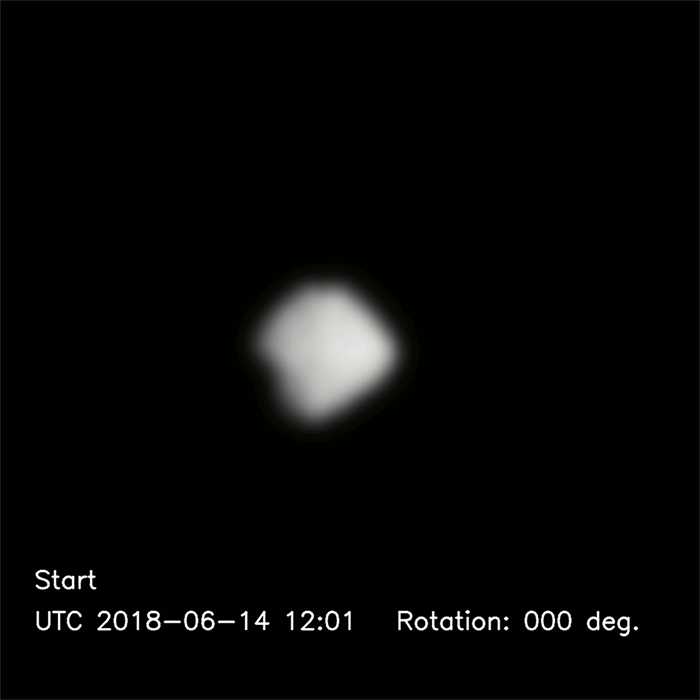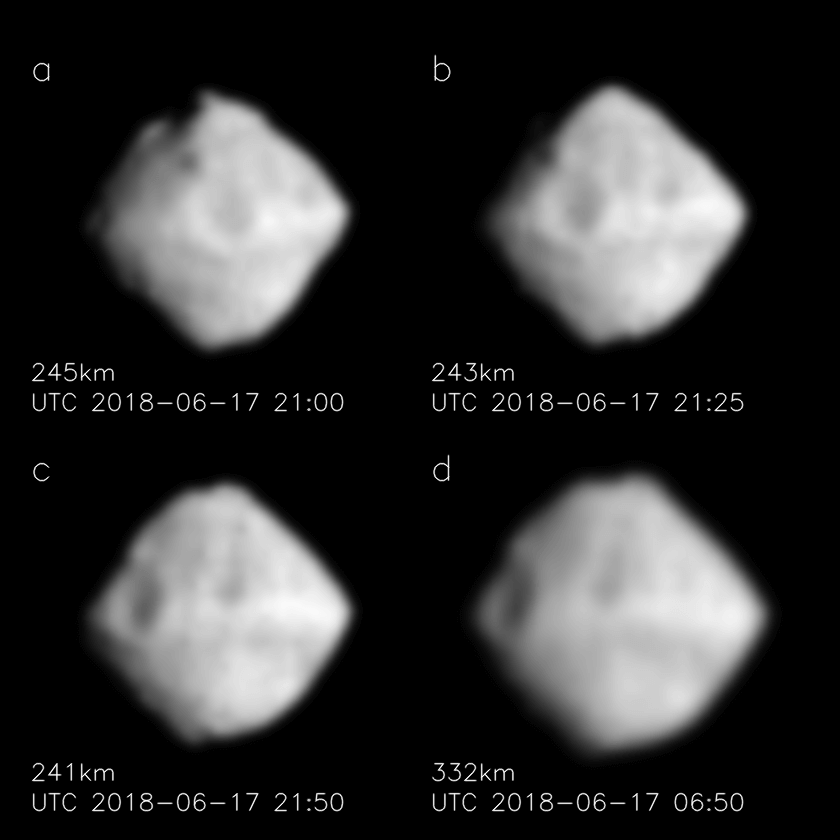
20th June 2018 Japanese probe returns images of asteroid As it prepares for orbital insertion and a surface landing, the Japanese Hayabusa2 probe has returned images of the asteroid 162173 Ryugu from only a few hundred kilometres away.
Hayabusa2 is an asteroid sample return mission launched by the Japanese space agency, JAXA, in December 2014. It follows on from Hayabusa and is designed to address weak points in that previous mission. The spacecraft is being sent to 162173 Ryugu (formerly designated 1999 JU3), a near-Earth object and potentially hazardous member of the Apollo group. After circling repeatedly around the inner Solar System (including a close flyby of the Earth in December 2015), Hayabusa2 is now preparing for the orbital insertion phase of its mission next week. It will arrive on 27th June and begin studying the asteroid via remote sensing observations. An explosive device will be launched at the surface to produce an artificial crater, followed by the release of a small lander and rovers. These will take images and gather samples for return to Earth in December 2020. Hayabusa2 is the world’s first sample return mission to a C-type (carbonaceous) asteroid. These are characterised by a very low albedo (brightness) because their composition includes a large amount of carbon. It is hoped that comparing results from the earlier Hayabusa mission (which studied Itokawa, another of the Apollo-class asteroids) will enable a deeper understanding of the distribution, origins and evolution of materials in our Solar System. The animation above consists of 52 images captured on 14th and 15th June, at distances ranging from 700 km (435 mi) to 650 km (404 mi). Since then, additional images have been released by JAXA, at closer ranges of 330-240 km (205-149 mi). Taken on 17th and 18th June, these allow some details to be identified more clearly:
The diameter of Ryugu is estimated to be 900 m (2,952 ft), which is consistent with ground observations, although there is still some uncertainty about the precise dimensions. It has a "day" length of 7.5 hours and the direction of rotation is reversed compared to Earth. The grain sizes of material on its surface are thought to be between 1 and 10 mm, making it quite dusty and porous. Planetary Resources, the asteroid mining company founded in 2010, estimates on its Asterank website that the current value of Ryugu for mining purposes is approximately US$82.76 billion. As well as Japan's space agency, NASA too is conducting an asteroid sample return mission. Known as OSIRIS-REx, this was launched in September 2016 and is expected to arrive at 101955 Bennu in August 2018, returning a small amount of material to Earth in 2023. This 500 m (1,640 ft) carbonaceous rock has a small chance of colliding with Earth between the years 2169 and 2199.
Comments »
If you enjoyed this article, please consider sharing it:
|








